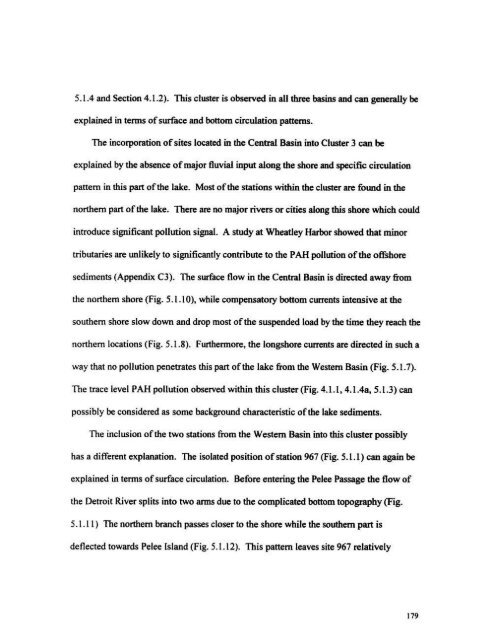I'r - Memorial University of Newfoundland
I'r - Memorial University of Newfoundland
I'r - Memorial University of Newfoundland
You also want an ePaper? Increase the reach of your titles
YUMPU automatically turns print PDFs into web optimized ePapers that Google loves.
5.1.4 and Section 4.1.2). This cluster is observed in all three basins and can generally be<br />
explained in tcnns <strong>of</strong>surface and bottom circulation patterns.<br />
The incorporation <strong>of</strong>sites located in the Central Basin into Cluster 3 can be<br />
expl ained by the absence <strong>of</strong>major fluvial input along the shore andspecific circulation<br />
pattern in this part <strong>of</strong> the lake. Most <strong>of</strong>the stations within the cluster are found in the<br />
northern part <strong>of</strong>the lake. There arc no major rivers or cities along this shore which could<br />
introduce signi ficant pollution signal. A study at Wheatley Harbor showed that minor<br />
tri butaries are unlikely to significantly contribute to the PAH pollution <strong>of</strong>the <strong>of</strong>fshore<br />
sediments (Appendix C3) . The surface flow in the Central Basin is directed away from<br />
the northe rn shore (Fig. 5. 1.10), while compensatory bottom currents intensive at the<br />
sou thern shore slow down and drop most <strong>of</strong>the suspended load by the time they reach the<br />
north ern locat ions (Fig. 5.l.8). Furthermore. the lon gshore currents are directed in such a<br />
way that no pollution penetrates this part <strong>of</strong>the lake from the Western Basin (Fig. 5. 1.7).<br />
The trace level PAH pollution observed within this cluster (Fig. 4.1.1, 4.1043, 5. 1.3) can<br />
poss ibly be considered as some background characteristic <strong>of</strong> the lake sediments.<br />
The inclusion <strong>of</strong> the two stations from the Western Basin into this cluster possibly<br />
has a different explanation. The isclared position <strong>of</strong>station 967 (Fig. 5. 1.1) can again be<br />
explaine d in term s <strong>of</strong> surface circulation. Before entering the Pelee Passage the flow <strong>of</strong><br />
the Detroit River splits into two arms due 10the complicated bottom topography (Fig .<br />
5.1.11) The northern branch passes closer to the shore while the southern part is<br />
deflect ed towards Pelee Island (Fig. 5.1.12). Thi s pattern leaves site 967 relatively<br />
179

















